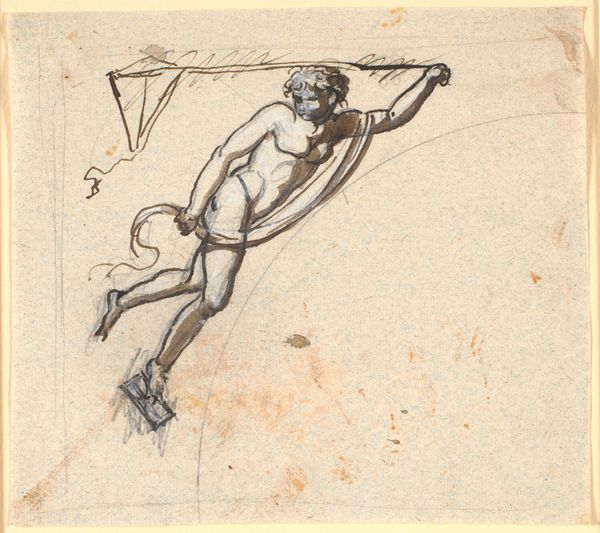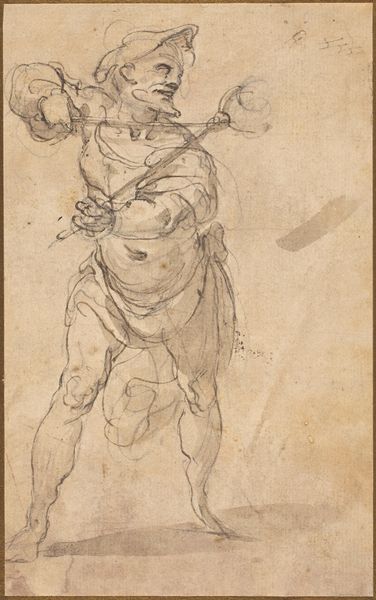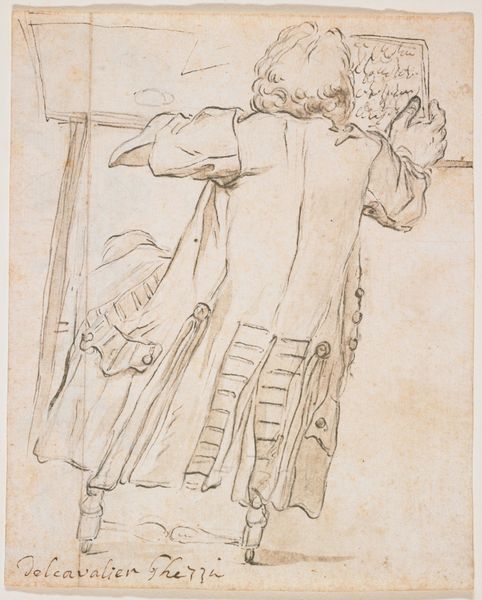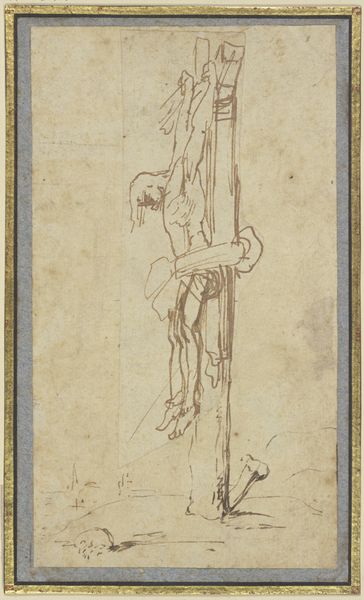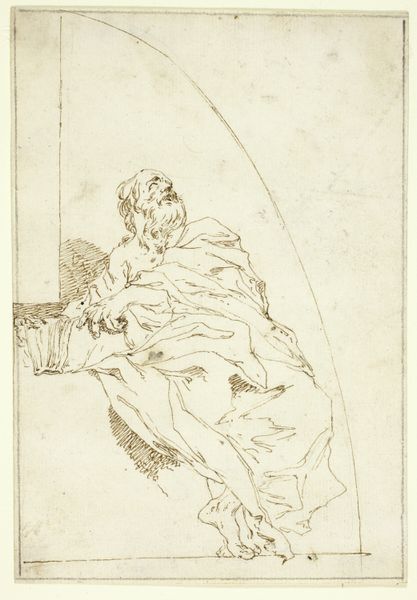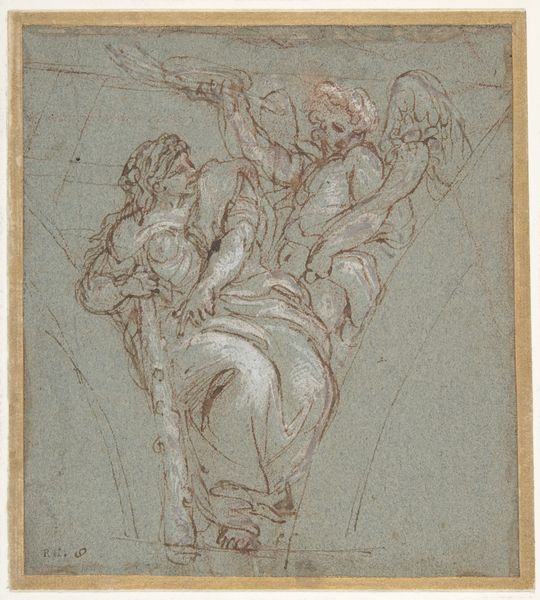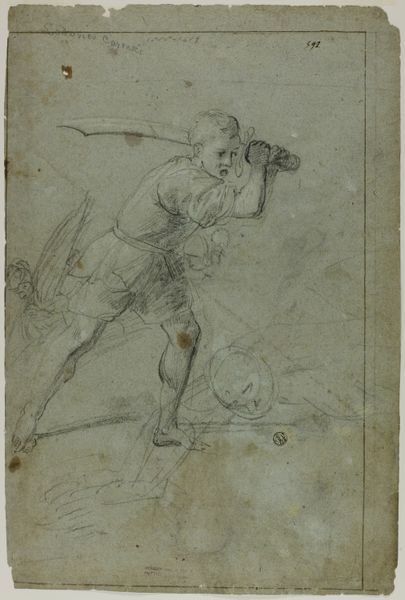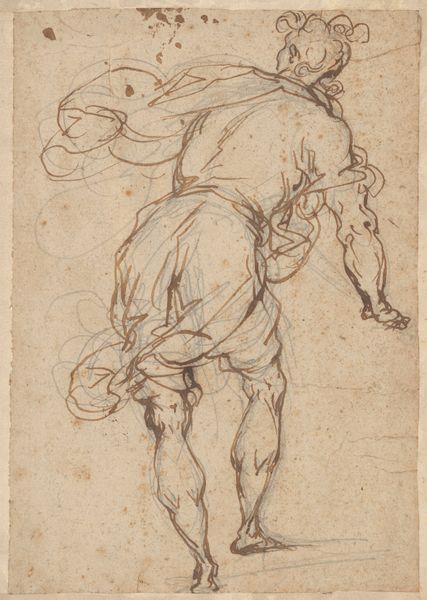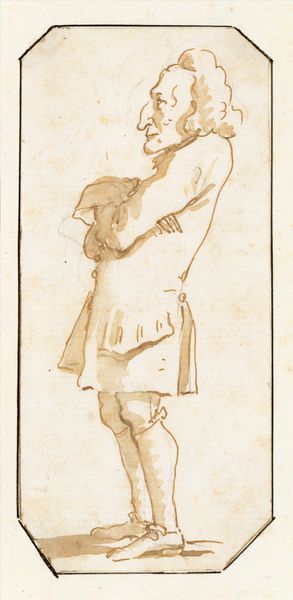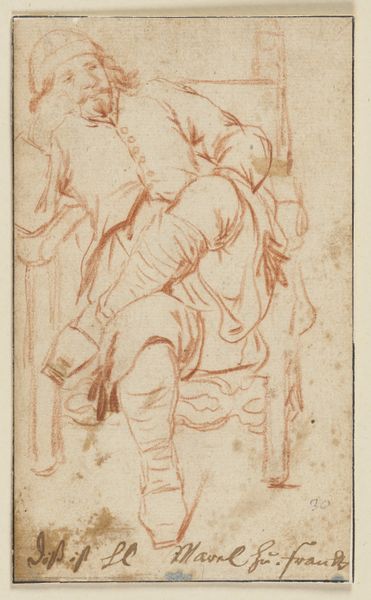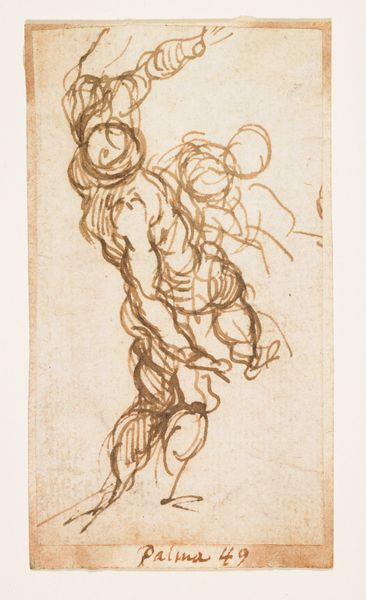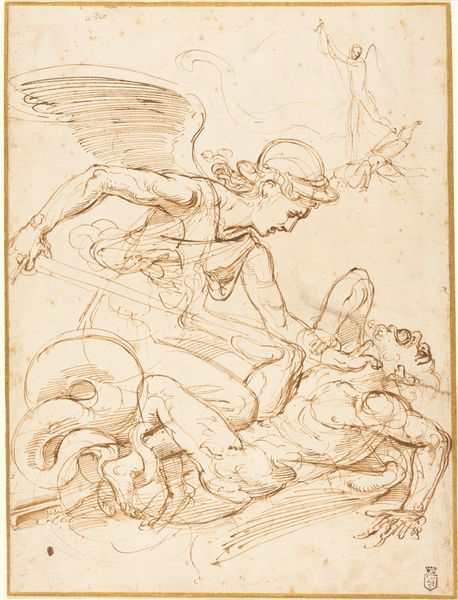
drawing, print, paper, ink, chalk, graphite, pen
#
portrait
#
drawing
# print
#
paper
#
ink
#
chalk
#
graphite
#
pen
Dimensions: 103 × 88 mm
Copyright: Public Domain
Editor: Here we have Pier Leone Ghezzi's "Man Sawing Wood," a drawing in ink, chalk, graphite, and pen on paper, and it appears to me that it depicts labor in a rather idealized fashion. What do you see in this piece, considering it's essentially a portrait? Curator: I see a fascinating snapshot of material culture and labor. The drawing’s raw, almost crude lines emphasize the physical effort involved in woodworking. It’s not just about the man; it’s about his relationship with the saw, the wood, and the very act of transforming raw material. Where did Ghezzi encounter such a sight and what significance did woodworking have to him? Editor: That's interesting. I was focusing more on the "portrait" aspect of it and didn't think about the importance of the saw, the wood, or the labor itself, particularly because it looks like Ghezzi drew other portraits with a touch of satire or irony. How would a materialist reading challenge conventional interpretations of this as just another portrait study? Curator: It shifts the focus. Instead of individual genius, we consider the collective effort embodied in the tools and materials. How was the saw manufactured? Where did the wood come from? Whose labor was involved in that process? Even Ghezzi’s act of drawing – the production of ink, paper, and chalk – speaks to broader economic and social networks. This approach decenters Ghezzi’s mastery, pointing towards materiality itself. Editor: So, it’s about recognizing that even art-making is a form of labor embedded within a network of material production. I suppose looking closely at Ghezzi's tools of the trade can unveil the connection between his world and ours, just through the depiction of simple acts of sawing? Curator: Exactly. By examining the materials and their social context, we reveal art-making to be less rarefied than we may have thought. The means and methods matter just as much as the image itself. Editor: I never thought I'd analyze a portrait this way. It definitely changes how I see the art historical significance.
Comments
No comments
Be the first to comment and join the conversation on the ultimate creative platform.
